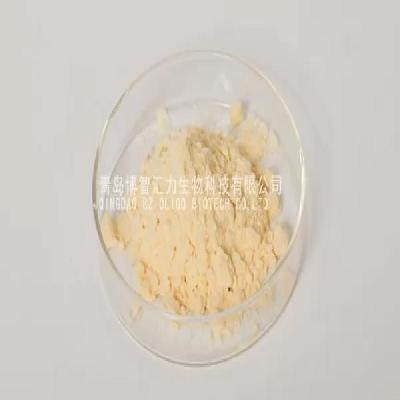-
Categories
-
Pharmaceutical Intermediates
-
Active Pharmaceutical Ingredients
-
Food Additives
- Industrial Coatings
- Agrochemicals
- Dyes and Pigments
- Surfactant
- Flavors and Fragrances
- Chemical Reagents
- Catalyst and Auxiliary
- Natural Products
- Inorganic Chemistry
-
Organic Chemistry
-
Biochemical Engineering
- Analytical Chemistry
-
Cosmetic Ingredient
- Water Treatment Chemical
-
Pharmaceutical Intermediates
Promotion
ECHEMI Mall
Wholesale
Weekly Price
Exhibition
News
-
Trade Service
Recently, Qujing's first photovoltaic power generation poverty alleviation project was completed in the paper mill village of Huize County, adding new impetus
to the local poverty alleviation.
The average altitude of Huize is more than 2200 meters, the sunshine time is long, the average annual sunshine is about 2200 hours, the solar energy resource conditions are good, and it has various conditions
for photovoltaic project construction.
On May 20, the Qujing Municipal Development and Reform Commission launched the construction of photovoltaic power generation poverty alleviation development project in Zhongcun, the contact point for poverty alleviation, becoming the first photovoltaic poverty alleviation demonstration project in Qujing City.
"To achieve the goal of poverty alleviation, hat removal, and income increase, we must emancipate and change our thinking, boldly explore and practice, and find a new support point
for local people to increase income.
" Zhong Yu, director of the Qujing Municipal Development and Reform Commission, introduced that when formulating measures to help paper mills in the middle village, the Municipal Development and Reform Commission formulated 7 precise poverty alleviation measures through careful field research, according to local conditions and local policies, and photovoltaic poverty alleviation is the first one
.
The project is put into use, so that poor households can not only obtain the income from the circulation of land contracting and operation rights, but also 70% of the income of photovoltaic power generation is owned by the poor households who have established a registration card, and the remaining 30% is used for enterprise management and operation
.
According to the project leader, in terms of design, the project also makes full use of the idle land under the photovoltaic bracket to guide the poor people to plant strawberries, white stilly and other characteristic crops, and realizes the combination of "on-board power generation and under-board farming" combined with agricultural and solar complementary mode
.
"After the project is connected to the grid to generate electricity, it is roughly calculated that it can increase the annual per capita income of 581 poor people in the village by 340 yuan
.
" Shi Xiuhong, secretary of the general branch of the party in the paper mill, said that the project has brought real benefits
to the poor households who have established archives.
It is understood that relying on photovoltaic power generation to alleviate poverty, Qujing City will actively explore and carry out a variety of "photovoltaic +" poverty alleviation models
such as "photovoltaic + party building", "photovoltaic + characteristic agriculture", "photovoltaic + migrant work" and "photovoltaic + collective economy" in combination with actual conditions.
Recently, Qujing's first photovoltaic power generation poverty alleviation project was completed in the paper mill village of Huize County, adding new impetus
to the local poverty alleviation.
The average altitude of Huize is more than 2200 meters, the sunshine time is long, the average annual sunshine is about 2200 hours, the solar energy resource conditions are good, and it has various conditions
for photovoltaic project construction.
On May 20, the Qujing Municipal Development and Reform Commission launched the construction of photovoltaic power generation poverty alleviation development project in Zhongcun, the contact point for poverty alleviation, becoming the first photovoltaic poverty alleviation demonstration project in Qujing City.
"To achieve the goal of poverty alleviation, hat removal, and income increase, we must emancipate and change our thinking, boldly explore and practice, and find a new support point
for local people to increase income.
" Zhong Yu, director of the Qujing Municipal Development and Reform Commission, introduced that when formulating measures to help paper mills in the middle village, the Municipal Development and Reform Commission formulated 7 precise poverty alleviation measures through careful field research, according to local conditions and local policies, and photovoltaic poverty alleviation is the first one
.
The project is put into use, so that poor households can not only obtain the income from the circulation of land contracting and operation rights, but also 70% of the income of photovoltaic power generation is owned by the poor households who have established a registration card, and the remaining 30% is used for enterprise management and operation
.
According to the project leader, in terms of design, the project also makes full use of the idle land under the photovoltaic bracket to guide the poor people to plant strawberries, white stilly and other characteristic crops, and realizes the combination of "on-board power generation and under-board farming" combined with agricultural and solar complementary mode
.
"After the project is connected to the grid to generate electricity, it is roughly calculated that it can increase the annual per capita income of 581 poor people in the village by 340 yuan
.
" Shi Xiuhong, secretary of the general branch of the party in the paper mill, said that the project has brought real benefits
to the poor households who have established archives.
It is understood that relying on photovoltaic power generation to alleviate poverty, Qujing City will actively explore and carry out a variety of "photovoltaic +" poverty alleviation models
such as "photovoltaic + party building", "photovoltaic + characteristic agriculture", "photovoltaic + migrant work" and "photovoltaic + collective economy" in combination with actual conditions.







